Evaluating SAP hybris For Your B2B Use Case
Learn how your integration requirements and available resources determine which solution fits the size and complexity of your organization
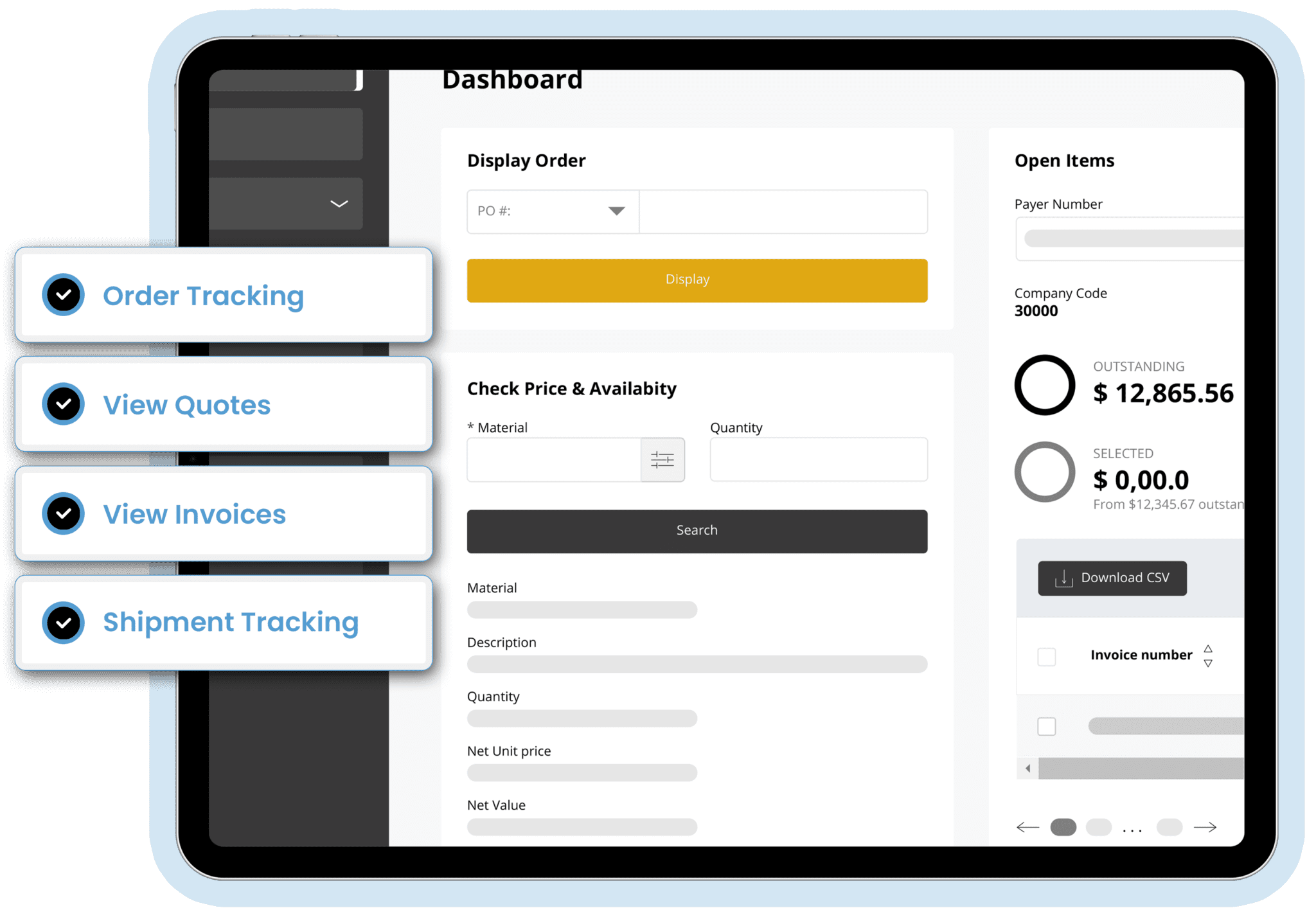
Understanding Hybris for B2B
In the recent B2B wave report, Forrester suggests that organizations evaluating B2B eCommerce solutions should look for deep, prebuilt integrations in addition to features/functionality:
“More providers today offer proprietary app stores. However, the actual implementation of these add-ons can require everything from a few plug-and-play configuration clicks to a major developer-dependent implementation project. Look for ease of integration, meaning that: 1) the integrated solution is administrable within common tooling, and 2) changes are applied in real time and do not require batch processing or manual refreshes to take effect.” [emphasis ours]
For manufacturers running B2B eCommerce, integration to the ERP is essential for real-time inventory availability, enforcement of complex pricing rules, omnichannel order tracking, and more.
Manufacturers should choose a solution with depth of integration, overall cost, and staffing requirements that fit their business (and their budget). That’s why we look at two key dimensions when recommending SAP hybris for B2B:
- Company revenue, which generally correlates with the size of the digital channel (and, thus, correlates with the resources which you can spend on the solution)
- Depth of integration required
In many cases, SAP hybris is too big, too complex, and too expensive for manufacturers launching B2B channels.
In those scenarios, Corevist Commerce may be a better fit. Here’s how Corevist Commerce compares to SAP hybris for B2B.
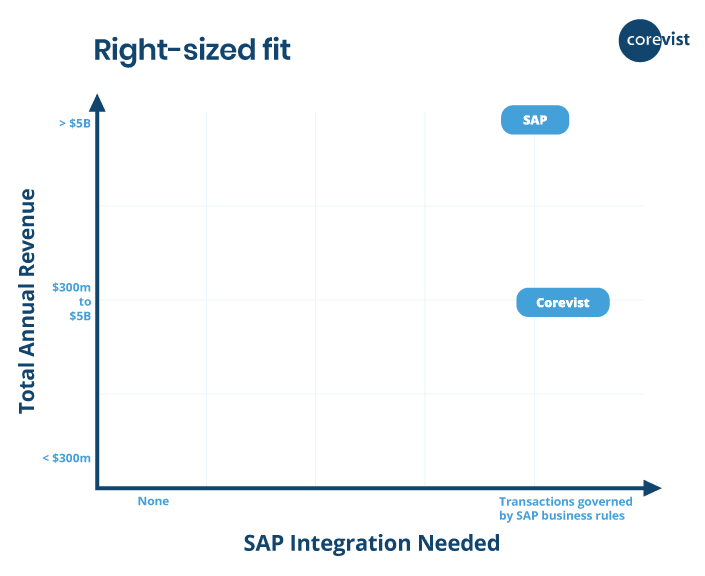
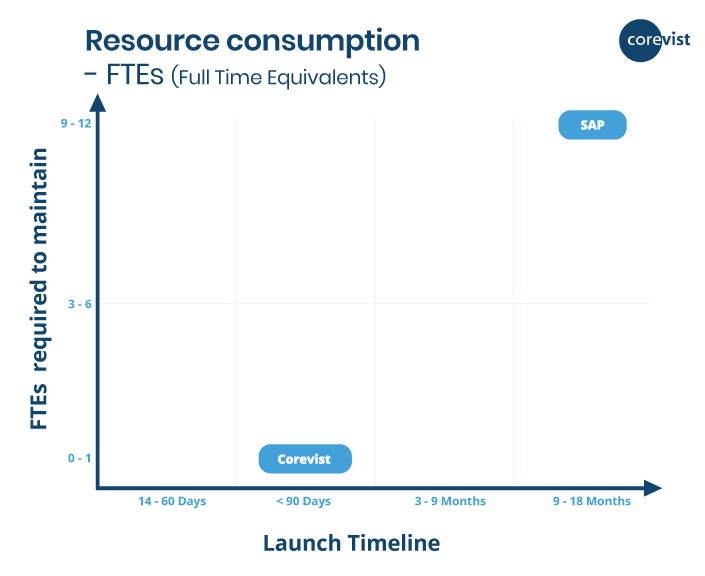
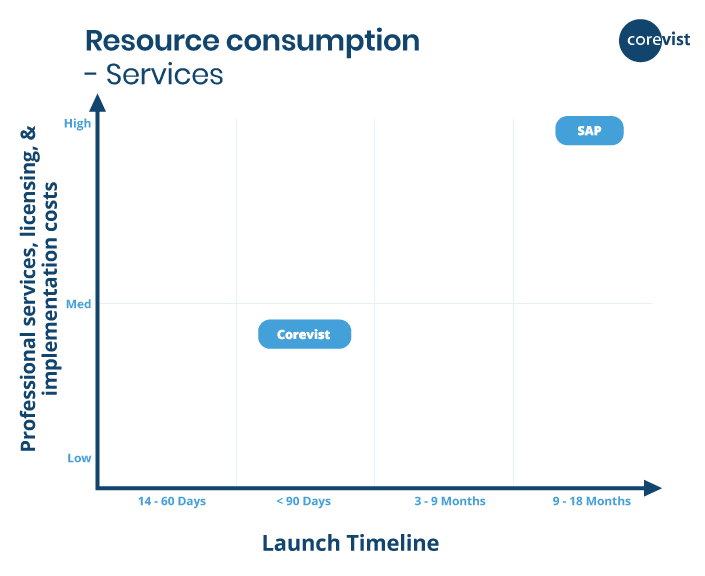
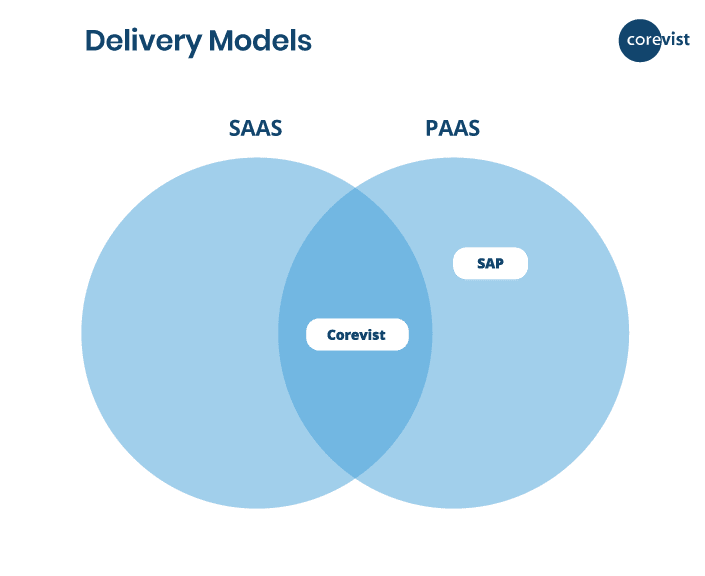
Choosing A Right-Sized Fit
Your organization’s total annual revenue correlates with the size of your digital channel (and, thus, correlates with the amount of resources you can spend on the channel). That’s why total annual revenue is a leading indicator of which B2B eCommerce solution (SAP hybris or Corevist Commerce) will serve you best.
But total annual revenue isn’t the only factor to consider in evaluating solutions. If your organization is dependent on SAP ERP, you’ll want to consider the depth of integration which you’ll need to bring complex transactions to the web.
Here’s how each revenue bracket breaks down (click to jump):
1. Organizations with $300M – $5B in annual revenue
2. Organizations with > $5B in annual revenue
1. Organizations with $300M – $5B in annual revenue
In our experience, most organizations in this revenue bracket fall into one of two groups:
- You just need a B2C-style front end without any SAP ERP integration for B2B
- Your business depends on SAP ERP, and the web experience must enforce personalized SAP business rules for each B2B user
1. No deep B2B integration required, just a B2C-style front end
Ideal platform: SAP Commerce Cloud (hybris)
If you fall into the first category, SAP hybris (Commerce Cloud) is a great choice. The solution offers everything which a midmarket, non-ERP-dependent organization needs to compete online. Commerce Cloud’s world-class functionality allows you to replicate a B2C-style experience for B2B segments.
You get greater control of the solution than you would with platforms like Shopify or BigCommerce, but you take on greater responsibility, too. With SAP Commerce Cloud, you’ll need an internal team of developers or an agency to build, launch, maintain, and support your solution.
One other note: for the $300M – $5B bracket, SAP Commerce Cloud has one disadvantage: if you need deep ERP integration, you’ll have to build those integration points yourself (or engage a partner to do so). That can be too much cost and complexity for mid-market manufacturers.
2. Deep SAP ERP integration required for complex B2B transactions
Ideal platform: Corevist
Corevist solutions were built to meet the needs of the $300M – $5B bracket—with direct, real-time SAP integration included.
Corevist Commerce checklist:
- You’re between $300M – $5B annual revenue
- You need comprehensive integration to SAP ERP
- You don’t want to involve extra internal/external resources in owning and managing the integrated solution
- You want to keep SAP ERP at the center of your world
We’re built specifically for manufacturers whose SAP systems run their businesses with complex, personalized business rules for each customer.
Welcome to Corevist Commerce.
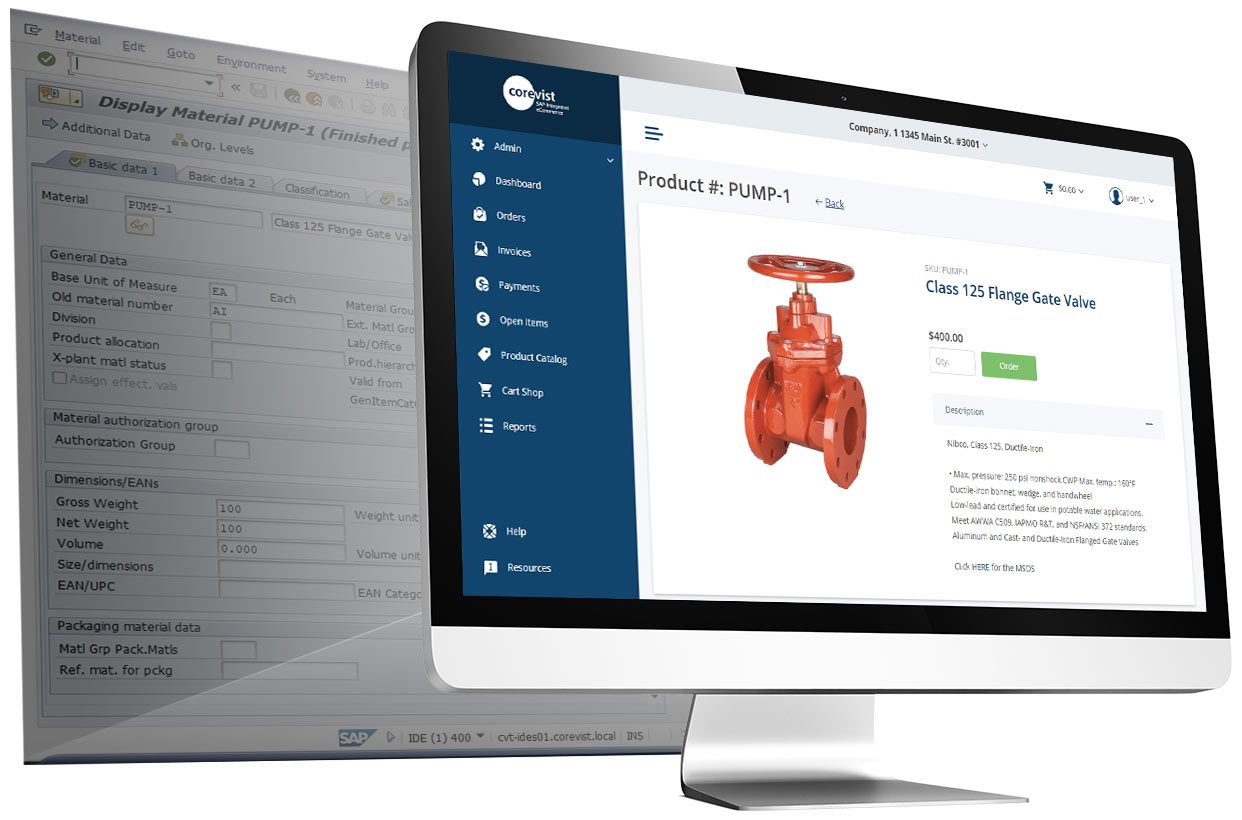
SAP-approved alternative to hybris in B2B scenarios.
Corevist Commerce is a hosted B2B eCommerce platform that extends your SAP data to your clients. Through 53 prebuilt integration points to SAP SD, customers can browse products, purchase, pay, and track orders through a friction-less online portal connected in real time with your SAP system. This all comes with minimal burden from the IT department and no need for costly middleware and data duplication.

“We looked at hybris, but it was just too big. Plus it wasn’t integrated to SAP out of the box. We would have to build all the integration points to SAP, even though it was an SAP application.”
–Brian Poole, Vice President – Global Information Systems, Bioventus
Corevist offers SAP-approved B2B eCommerce solutions for manufacturers doing $500M – $5B in annual turnover. For organizations that can’t justify the complexity or cost of hybris for B2B, we’re a great alternative. Our solutions offer:
- Standard B2B eCommerce functionality
- PLUS order tracking & invoice payments
- Comprehensive, real-time SAP integration included
- No additional IT resources required
- No middleware integration required
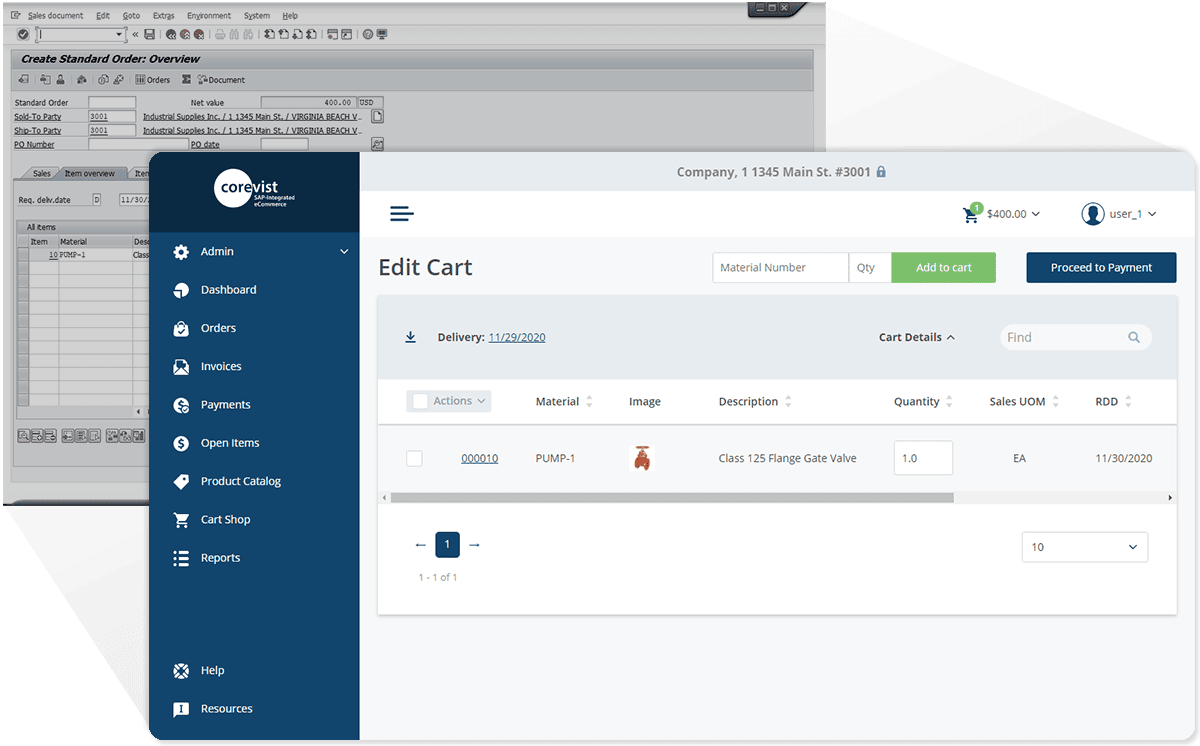
FAQ: Why not just integrate hybris to SAP ERP with a middleware or iPaaS solution?
We’ve talked to many organizations in the $300M – $5B bracket who’ve gone down this road. Ultimately, if you do have a deep dependency on SAP ERP, standing up and maintaining a middleware integration between SAP ERP and hybris may be a challenge. Whether in-house or outsourced, your organization will have to do some heavy lifting.
To bring your SAP business rules to the front end, you’ll need a middleware solution to transfer data to and from SAP and the B2B eCommerce solution. If you’re in the >$5B revenue bracket, the high cost and complexity of that middleware architecture may be justified. However, in the $300M – $5B bracket, it’s often infeasible for organizations to get the integration off the ground (or keep it up and running).
Middleware-based architectures require your internal teams (or outsourced teams) to build and maintain your SAP business rules in 3 separate places—SAP, middleware, and eCommerce. That leads to a much higher cost, as you’re retaining 3 separate teams, one for each system:
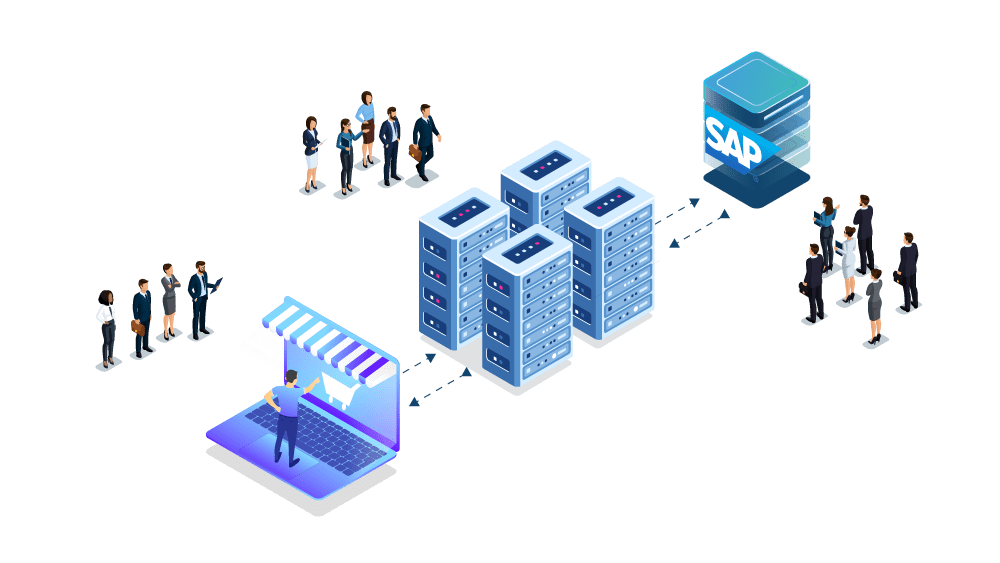
For the $300M – $5B range, the high cost and complexity of a middleware integration isn’t a trivial problem. An unreliable integration damages trust among customers, and the high cost of maintaining that integration (and thus, that trust) eats up too many resources for a midmarket company.
Without SAP ERP integration, the only other option is manual order entry. You’ll need CSRs (customer service reps) whose sole job is punching eCommerce orders into the ERP. While that’s a feasible process for small businesses with low order volumes, it’s not scalable, and companies in the $300M – $5B range usually find it unmanageable.
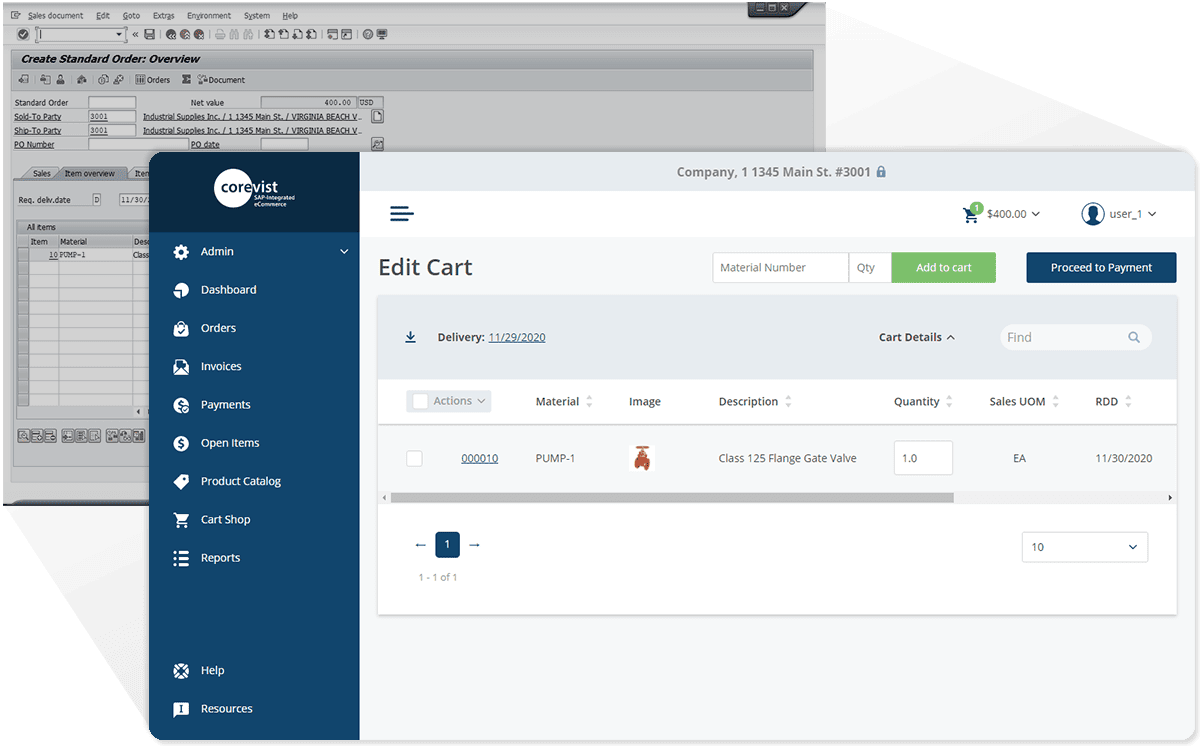
Only Corevist eliminates the cost and complexity of transferring orders and data between SAP and the web store. Rather than requiring manual order entry or a third system, Corevist interacts with SAP directly, in real time. This eliminates wasteful systems and processes in your OTC (order to cash) cycle.
3. Organizations with > $5B in annual revenue
Ideal platform: SAP Commerce Cloud
If your organization generates >$5B in total annual revenue, and you’re looking to spend $800k+ on a fully customized frontend solution (plus more on a custom-tailored integration to SAP ERP), then SAP Commerce Cloud is a great fit for B2B eCommerce. As a truly enterprise-class platform, it offers tons of frontend capabilities for a powerful, flexible, B2C-style experience. You buy the platform, then use internal teams (or outsourced developers) to build out a solution using components and customizations tailored to your unique needs.
For $5B+ organizations, SAP Commerce Cloud is well-positioned to act as a B2B eCommerce powerhouse.
Of course, with all this power comes great responsibility. As truly a enterprise-class platform, Commerce Cloud gives you more control—and requires you to take more ownership of the technology stack. Implementations run large (often over a million dollars), and Commerce Cloud requires dedicated teams to maintain and support.
For many organizations with >$5B total annual revenue, this higher cost, complexity, and responsibility is easily justified, as you get powerful frontend capabilities and enterprise-class functionality.
Delivery model: PaaS
SAP Comemrce Cloud is a PaaS solution. You license the platform, then use it to develop, launch, and manage your own unique B2B eCommerce solution.
Sources:

